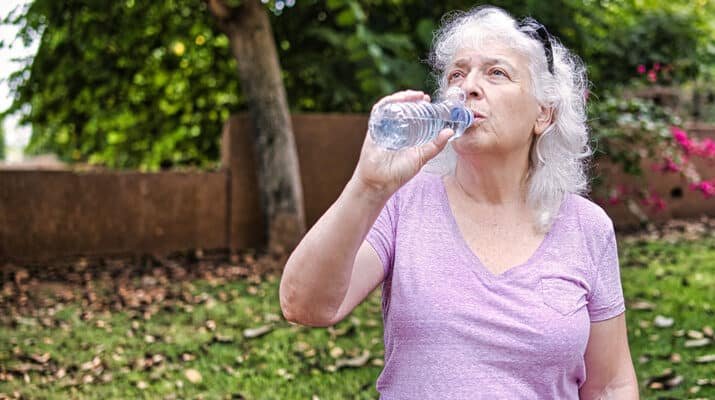Many caretakers of older adults struggle to get them to drink enough fluids
By Deborah Jeanne Sergeant
Up to 40% of adults older than 65 are chronically dehydrated, according to a study noted by Sage Journals in 2019.
This can lead to a plethora of problems for those receiving support for activities of daily living, whether in a long-term care facility or home care.
Insufficient hydration and their cognitive and physical struggles both worsen with dehydration and contribute to dehydration.
“It’s very important that we stay hydrated,” said gerontologist Sharon Brangman, faculty member at SUNY Upstate Medical University and a distinguished service professor, chairwoman of geriatric medicine and director of the Upstate Center of Excellence for Alzheimer’s Disease. “As we get older, the thirst center in the brain is not as sensitive. It may take a higher level of dehydration to realize we need to get something to drink. You need to drink before you really feel very thirsty as you may already be dehydrated.”
Not hydrating can cause people to have low blood pressure and contribute to dizziness, falls and fall-related injuries. Brangman added that dehydration can cause slow kidney function, higher risk of cavities, and dryer hair and skin.
“We need to have fluids to regularly flush out the bladder,” Brangman said. “People who don’t drink enough are more likely to get a urinary tract infection.”
One sign that a person needs more fluids is dark urine and little urination. Also look for signs of dry mouth, fatigue and headache. People who frequently experience urinary tract infections may also be chronically underhydrated.
Encouraging greater fluid intake can be tricky. Laurel Sterling, registered dietitian and global educator for Carlson Laboratories in Canastota, suggested keeping water nearby “such as water bottles near a favorite spot and water pitchers in the fridge. Add fruits, healthy flavorings or electrolyte stick packs with flavor to water to make it more appealing.”
She added that broth-based soups can also sneak in more fluids.
“Choose foods with high water content,” said Christopher J. Norman, geriatric nurse practitioner, PhD candidate and associate medical director at PACE CNY.
He recommended fruits like watermelon, cantaloupe, honeydew and vegetables like cucumbers and celery.
“They have high water content and have good benefits like dietary fiber,” Norman said. “It’s not just drinking enough water, which is subjectively defined. Make it interesting for your body.”
Sugar-free gelatin, popsicles, yogurt, and cottage cheese are all high in liquids as well.
For people weary of drinking water, adding sparkling water as an option can help increase variety without the blood sugar spikes of sweetened soda. Sipping milk or 100% juice between bites can help get more fluids in during meals. Offering a variety of fluids can make it more interesting.
Coffee and tea are fine as well, but drinking these all day can have a diuretic effect unless they’re caffeine-free varieties.
Try habit stacking to get more fluids in, such as a glass of water upon rising and when taking a pill.
Offering ice-cold water may help. Those prone to feeling chilly may favor a warm beverage. A double wall insulated tumbler with a secure lid can make it easier to keep a drink handy without risking spills.

